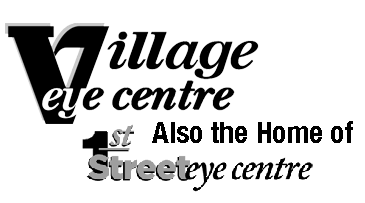Double vision, also known as diplopia, is a symptom of a number of common eye diseases and conditions. Depending on the underlying cause, double vision can be experienced by people of all ages. This is why diagnosis and treatment of conditions that cause diplopia are central to eye care, from pediatric to geriatric care.
In order to help our patients understand their symptoms, our eye care team discusses below the types of double vision, its causes and how it can be treated. Take a look!
Types of Double Vision
There are two types of double vision that eye doctors diagnose: Monocular and binocular.
Monocular double vision involves an issue within the eye itself. It may affect only one eye, or it may affect both eyes separately. This may involve vision issues from conditions affecting the lens or cornea.
Binocular double vision involves both eyes together, and can often be identified by the fact that it only occurs when both eyes are open. This type of double vision may involve problems with eye teaming or similar visual skill deficiencies, weakness in eye muscles that prevent the eyes from moving in unison or problems with visual processing.
One of the first tasks your optometrist will have is to identify whether your double vision is monocular or binocular. This is important because binocular double vision may be a sign of serious neurological damage, whereas monocular double vision is not usually linked to any larger sight-threatening or systemic diseases or issues.
What Causes Monocular Double Vision?
When experiencing monocular double vision, you will likely see the primary image overlapped by a kind of shadow copy of the same image. The most common root cause of this is dry eye syndrome, as this condition can cause the tear film on your eye surface to be uneven. Your eye doctor may prescribe artificial tears or prescription eye drops to help clear up this type of double vision.
Other causes of monocular double vision may include:
- Irregular cornea
- Retinal disease
- Cataract
- Eyeglasses in the wrong prescription, bent glasses frames, or scratched lenses
What Causes Binocular Double Vision?
Eye misalignment is the most commonly diagnosed cause of binocular diplopia. This causes each eye to send slightly different visual information to the brain, which then cannot combine them into a single image, resulting in double vision.
Treatment of binocular double vision may involve use of prism glasses. If the misalignment is severe enough, your eye doctor may recommend surgery to correct it.
Other conditions that may cause binocular double vision include:
- Stroke
- Previous trauma to the head or area in or around the eye
- Systemic disorders
If binocular double vision comes on suddenly, you should contact us immediately, as this may signal more severe sight- or even life-threatening conditions.
Eye Exams: An Essential Part of Double Vision Treatment
A comprehensive eye exam with our eye care team at is the only way to reliably diagnose and treat the cause of your double vision. For more information and to book an appointment with us, visit our eye care clinic or give us a call at today!
At Village Eye Centre, we put your family's needs first. Talk to us about how we can help you maintain healthy vision. Call us today: 587-410-5920 or book an appointment online to see one of our North Edmonton eye doctors.
Want to Learn More? Read on!
FOLLOW US:
Q&A
How do prism glasses help with double vision?
Prism glasses are effective for double vision caused by misalignment of the eyes. The prism lenses bend incoming light before it reaches the eye, ensuring that images are focused on the same part of each eye. This allows the eyes to send similar visual information to your brain, making it easier for the brain to combine them into a single image.
Can prescription eyeglasses or contacts correct double vision?
Depending on the root cause of your double vision, prescription eyeglasses or contact lenses may help. Standard prescription glasses and contacts can correct for conditions such as mild keratoconus and astigmatism, while scleral contact lenses may be an ideal way to correct for more advanced keratoconus and severe dry eye.

